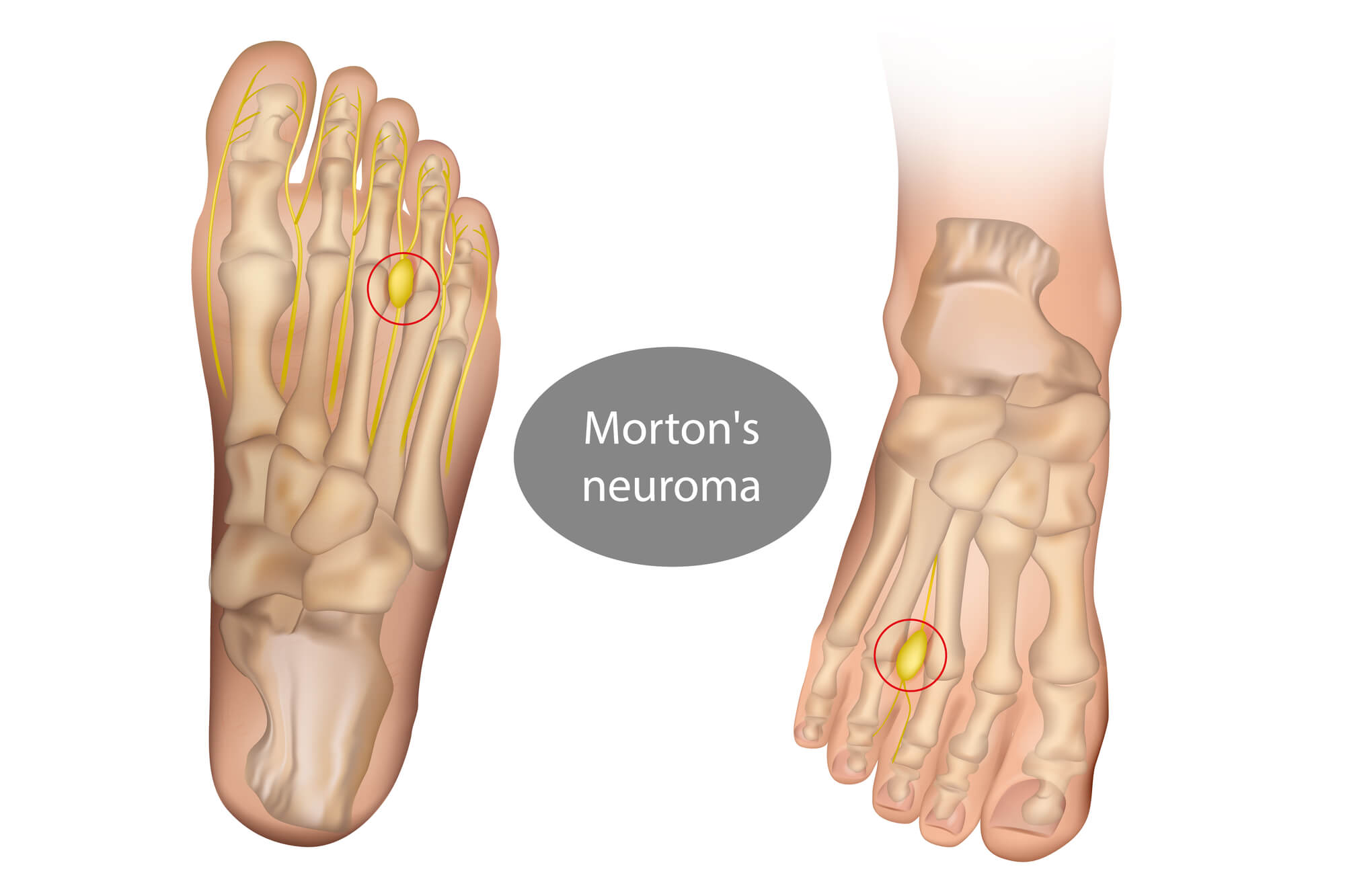Neuroma: Symptoms, Causes & Treatment
If you have ever felt a pebble in your shoe or a lump under your foot while walking, you know how uncomfortable and annoying it can be. However, for some people, the cause of this discomfort is not a foreign object but a condition called neuroma. Neuroma is a painful growth of nerve tissue that can develop in the foot, most commonly in the ball of the foot between the third and fourth toes. It can cause various symptoms, including pain, tingling, and numbness in the affected area. This article will explore the causes, symptoms, and treatment options for neuroma, so you can get the relief you need and return to your normal activities
What is Neuroma?
A neuroma is a benign growth of nerve tissue that can develop in the foot, most commonly between the third and fourth toes. It is also known as an interdigital neuroma, because it occurs in the interdigital space between the toes. Neuromas can also develop in other parts of the foot, but this is less common.
Neuromas are caused by the irritation or compression of the nerve tissue, which can lead to the thickening and swelling of the nerve. This can cause a variety of symptoms, including pain, tingling, and numbness in the ball of the foot and toes.
Types of Neuroma
There are several types of neuroma, including Morton's neuroma, which is the most common type. Other types of neuroma include:
- Plantar neuroma: This type of neuroma occurs on the bottom of the foot, usually in the arch or heel area.
- Digital neuroma: This type of neuroma affects the nerves in the fingers or toes.
- Nerve sheath neuroma: This type of neuroma affects the protective layer around the nerves.

Symptoms of Neuroma
Common Symptoms
The most common symptom of neuroma is a pain in the ball of the foot, which can range from mild to severe. The pain may be a sharp or shooting sensation, or it may feel like a burning or tingling sensation. You may also feel numbness or a loss of sensation in the toes.
The pain may be triggered by certain activities, such as walking or running, or it may be constant. Sometimes, the pain may be relieved by taking a break or changing shoes.
Severe Symptoms
In severe cases of neuroma, the pain may be severe enough to interfere with your daily activities. You may have difficulty walking or standing for long periods, and the pain may be severe enough to wake you up at night.
If you are experiencing severe pain or other severe symptoms, you must see a healthcare professional for a proper diagnosis and treatment plan.

Causes of Neuroma
Trauma or Injury
One of the most common causes of neuroma is trauma or injury to the foot, such as a sprained ankle or a fracture. This can cause the nerve tissue to become damaged or irritated, leading to a neuroma.
Overuse or Repetitive Strain
Another common cause of neuroma is overuse or repetitive strain on the foot. This can occur if you engage in activities that stress the ball of your foot, such as running or playing sports. Wearing high-heeled or ill-fitting shoes can also contribute to the development of a neuroma.
Other Possible Causes
There are several other possible causes of neuroma, including:
- High arches or flat feet: People with high arches or flat feet may be more prone to developing neuromas because their feet are more susceptible to irritation and strain.
- Tight or narrow footwear: Wearing shoes that are too tight or have a narrow toe box can put pressure on the toes and cause the development of a neuroma.
- Foot deformities: Certain foot deformities, such as bunions or hammertoes, can increase the risk of developing a neuroma.

Diagnosing Neuroma
Physical Exam and Medical History
If you suspect a neuroma, it is important to see a podiatrist or other healthcare professional for a proper diagnosis. The healthcare professional will physically examine your foot and ask about your medical history and symptoms. They may also ask about your shoe wear and any activities that may have contributed to the development of the neuroma.
Imaging Tests
In some cases, the healthcare professional may order imaging tests, such as an MRI or CT scan, to better look at the nerve tissue and identify any abnormalities. These tests can help confirm the diagnosis and guide treatment.

Treatment Options for Neuroma
Conservative Treatment Options
There are several conservative treatment options available for neuroma, including:
- Shoe inserts or orthotics: Wearing shoe inserts or orthotics can help alleviate pressure on the ball of the foot and reduce pain.
- Wide toe box shoes: Wearing shoes with a wide toe box can help reduce pressure on the toes and alleviate pain.
- Ice and rest: Applying ice to the affected area and taking breaks from activities that exacerbate the pain can help reduce inflammation and promote healing.
- Nonsteroidal anti-inflammatory drugs (NSAIDs): Taking NSAIDs, such as ibuprofen, can help reduce inflammation and pain.
Surgical Treatment Options
In some cases, conservative treatment options may not effectively relieve pain and other symptoms. In these cases, surgical treatment may be necessary. There are several surgical options available, including:
- Nerve decompression surgery: This surgery involves removing the nerve tissue that is causing the neuroma.
- Nerve removal surgery: This surgery involves removing the entire nerve that is causing the neuroma.
- Nerve implant surgery: This surgery involves replacing the damaged nerve tissue with a nerve implant.
Choosing the Right Treatment Plan
The right treatment plan for you will depend on your neuroma's severity and overall health. Your healthcare professional will help you determine the best course of treatment based on your specific needs and circumstances.
Conclusion
Neuroma is a painful condition that affects the nerves in the ball of the foot. It is caused by irritation or compression of the nerve tissue and can be triggered by various factors, including trauma or injury, overuse, and ill-fitting shoes. If you are experiencing foot pain in the ball of your foot, it is important to see a podiatrist or other healthcare professional for a proper diagnosis and treatment plan. There are various treatment options available, including conservative and surgical options, and the right treatment plan will depend on the severity of your neuroma and your overall health.

